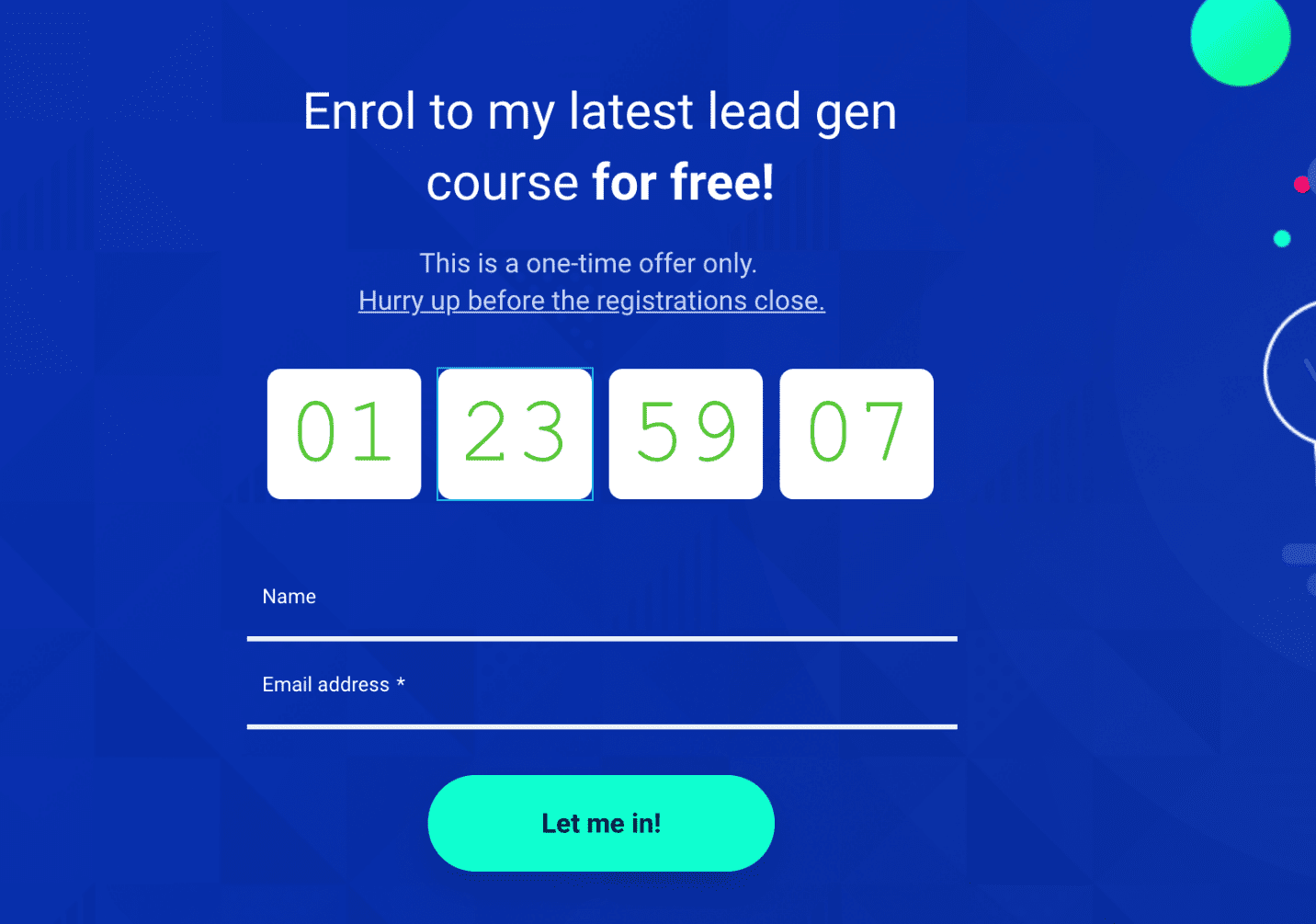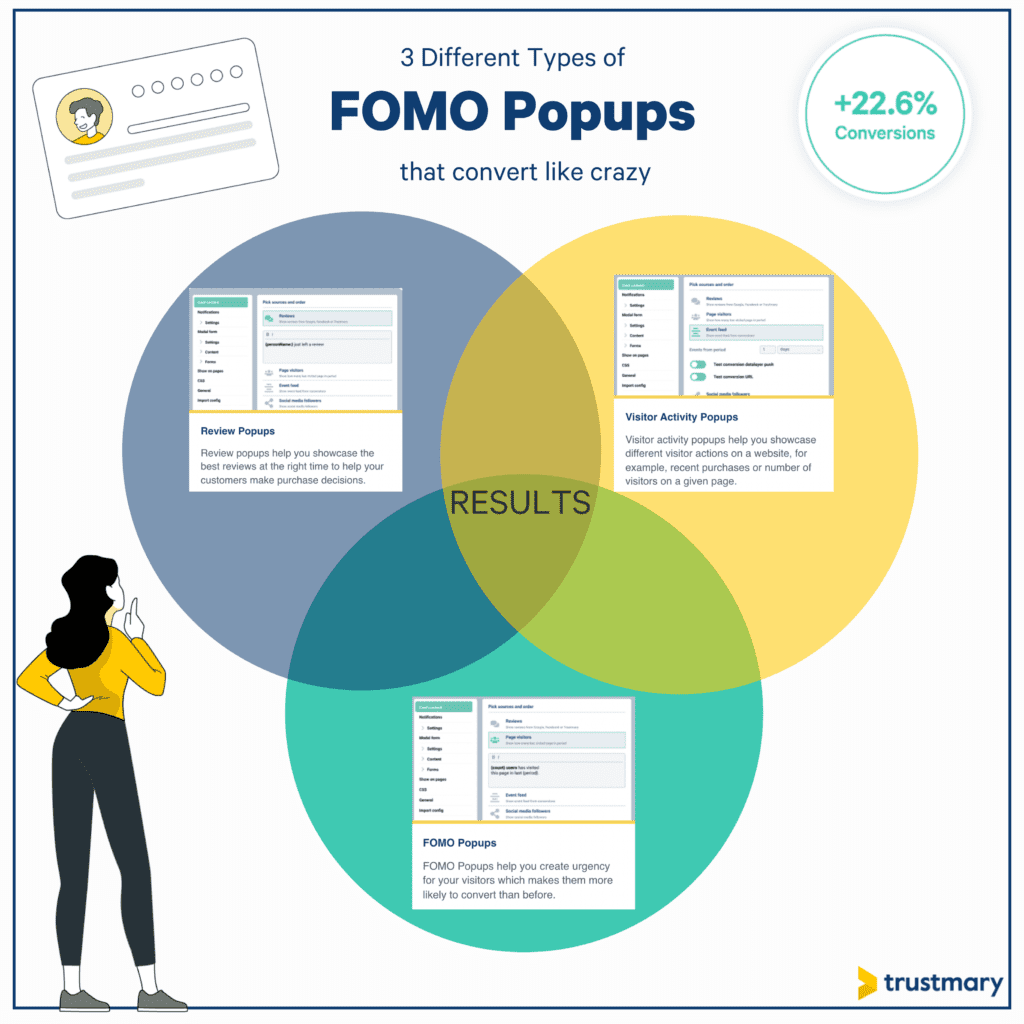7 Real Examples You Can Copy of Using Fear of Missing Out (FOMO) in Advertising


Ad costs are on the rise, and AI marketing tools make creating content easier, which leads humans to be bombarded with content 24/7.
Standing out with your messaging in any channel is increasingly difficult.
If you know the basics of advertising, you can still stand out from the crowd easily by creating personalized ads that your audience will interact with. Fear of Missing Out (FOMO) advertising is a technique that takes your ads to the next level, as you tap into the emotions of being left without something.
If you are new to fear of missing out advertising, the following 7 examples will show you how powerful it is and how you can do the same.
As a result, you'll learn to get better results with the same or even a lower ad budget.
What is Fear of Missing Out in Advertising?
Fear of Missing Out (FOMO) is a phenomenon where people fear missing out on things that others might be having fun with. A study defined it as:
“The uneasy and sometimes all-consuming feeling that you’re missing out – that your peers are doing, in the know about, or in possession of more or something better than you.”
It is used in advertising to trigger fear in the audience and then persuade them to take action. And it works.
Research shows that 69% of millennials experience FOMO, and consequently, they show up, share, and engage. Over 60% of millennials reported that they make purchases based on FOMO.
Gen Z is even more prone to be influenced by FOMO tactics, as a recent study published in April 2025 points out:
"The results show that FoMo lifestyle has a strong influence on purchasing decisions of viral products. The main factors affecting these decisions include social pressure, exposure to social media content, and the desire for social validation. Additionally, it was found that students with a higher level of FoMo tend to make impulsive purchases and give less consideration to the functional aspects of the items they buy."
In other words, if your target audience consists of especially millenials and younger generations, FOMO might work for your brand.
Fear of Missing Out Advertising Examples
The following 7 examples of Fear of Missing Out in advertising will inspire you to start using FOMO in your advertising campaigns to see instant results.
1. Stock Left
Showing items left in the stock is one of the best ways to trigger FOMO. A product that’s limited in stock is perceived to be of high quality and people want to buy it, so they don’t miss what others are using.
Here is an example:

When people see that an item is scarce, they fear missing it and end up buying it. However, scarcity works best with perishable and time-sensitive products, according to Sungho Park. For example, hotel rooms are a perfect example of time-sensitive products.
Here is an example from Booking.com:

You can’t afford to miss this last room, right?
2. Countdown Timer
Using countdown timer is a great way to highlight scarcity and to make your traditional products appear time-sensitive. You must have seen countdown timers on several websites including eCommerce stores. This is a perfect way to trigger fear of missing out.
Here is an example of how a countdown timer can look:

Research shows that countdown timers increase sales by 30%. Using countdown timers with exclusive items is a great way to boost conversions and sales.
3. Reviews and Testimonials
Showcasing reviews, overall star ratings, and testimonials from customers triggers fear of missing out to a great extent.
Positive reviews show that people are enjoying your product, and this ignites a fear in potential buyers that they're missing the benefits that others have access to.
This is the reason why 93% of customers don’t take any action until they have read reviews and testimonials from existing customers.
Let's look at this example where you Google for a solution and see these three options.
Only one of them has a star rating in search results while the other two don't.
People are more likely to click the one with social proof.

More reviews you have, the better as it makes your product more appealing to potential customers.
4. Social Proof
Reviews and testimonials are an important form of social proof but there is another social proof type that is extensively used in fear of missing out advertising. Showing website visitors who have purchased your product via a notification is an ideal social proof that triggers FOMO instantly.
Here is an example from Trustmary that helps businesses show these types of instant notifications to website visitors:

You can choose from:
- Review and testimonial popups
- Social proof popups
- FOMO popups
- Visitor Activity popups
- or create your own review widget!
- You can even create a Google review widget
Sign up free to figure out how Trustmary could help you grow with FOMO and social proof, starting with reviews.
Back to the example.
Booking.com also uses this technique. They mention how many times a specific hotel has been booked in the past few hours to encourage people to take action:

When visitors see that people are buying a product, they want to buy the same products to ensure they aren’t left out.
5. Early Bird Discount
Giving discounts to the first few hundred customers is another FOMO technique that is used extensively by marketers and advertisers. It is mostly used for events and conferences.
Here is an example:

Research shows that the early bird rate is one of the most effective and top-rated event promotion techniques:

Why does this work?
Because people don’t want to miss the event and they end up buying the ticket to avoid the fear of missing out.
6. Gated Content
If there is one thing that clearly shows your audience that they have missed something or are missing something, it's gated content. Gated content requires a visitor to fill out a form or register in order to get access to the content.
Gated content is also often referred to as lead magnets, as it's something that pulls in potential customers and is so valuable that people are ready to exchange their contact information for it.
These can easily be used as Facebook lead gen ads.
Here is an example:

Gated content is used by leading blogs and sites such as HBR, Statista, The New York Times, and others. Your content, in this case, must be exclusive and high quality in order to make it work.
A further example on gated content and how to use it in marketing can be found by reading our Definitive Guide for Understanding the Power of Social Proof.
7. Missed Opportunities
Showing your audience what opportunities they have missed and what they're about to miss (if they won’t take action now) is another FOMO technique. You are clearly telling potential buyers what they are about to miss, and this works very well in most cases.
Here is an example:

This shows potential buyers that they have missed an opportunity and they can then switch to other hotels and will quickly reserve to avoid missing their favorite hotel again.
When showing visitors what they have missed, it is essential to provide them with alternatives and guide them to take action quickly.
How to Use FOMO in Advertising – and How Trustmary Makes It Easy
Fear of missing out, or FOMO, is one of the most powerful psychological triggers in marketing. It taps into a simple human truth: people don’t want to miss opportunities that others are taking advantage of. In advertising, FOMO drives people to act quickly, sign up, or make a purchase before it’s “too late.”
Below is an overview of the main strategies and how Trustmary helps you implement them with ease.
7 Steps to Use FOMO in Advertising (with Trustmary)
- Show scarcity: Highlight limited stock or time-sensitive offers.
Use Trustmary widgets to pair scarcity with live social proof that others are buying. - Add countdown timers: Create urgency for sales or registrations.
Combine with Trustmary popups showing real customer activity for extra impact. - Use reviews and testimonials: Let happy customers create FOMO for you.
Trustmary automatically collects and displays reviews on your website. - Display real-time social proof: Show that others are signing up or leaving reviews.
Trustmary popups update dynamically to build momentum and trust. - Offer early-bird rewards: Give special deals to the first customers.
Turn early feedback into visible testimonials with Trustmary’s automated collection. - Create exclusivity: Promote invite-only content or access.
Show real user experiences through Trustmary widgets to make exclusivity believable. - Highlight missed opportunities: Remind visitors what they’ll lose by waiting.
Use Trustmary’s review displays to show what others are already enjoying.
Turn FOMO into Conversions with Trustmary
If you want to make your marketing more persuasive without resorting to tricks, Trustmary gives you the tools to do it transparently and efficiently.
You can:
- Collect feedback, reviews, and testimonials automatically.
- Display real-time social proof popups on your site.
- Integrate with your CRM or website builder in minutes.
- Increase conversions through honest, data-backed FOMO tactics.
Start turning your customer activity into trustworthy social proof, and let FOMO work for you.

Further Reading
If you're looking for more to read on this topic, here are some suggestions:
- Psychology behind Fear of Missing Out
- 4 Social Proof Examples to Inspire You
- Fear of missing out research for marketers and how you can make use of it